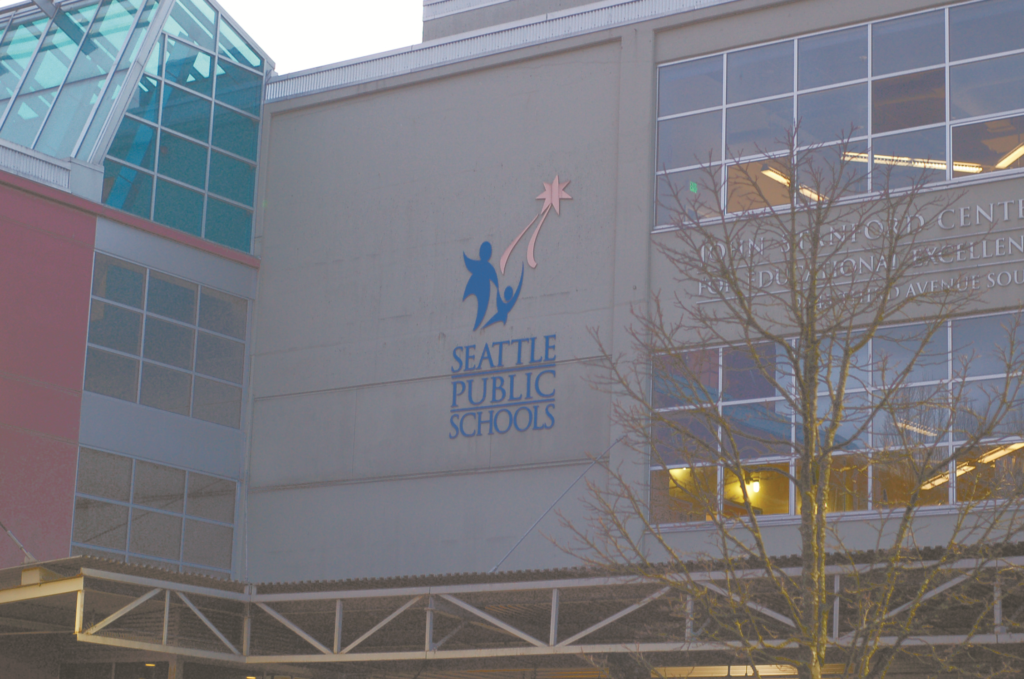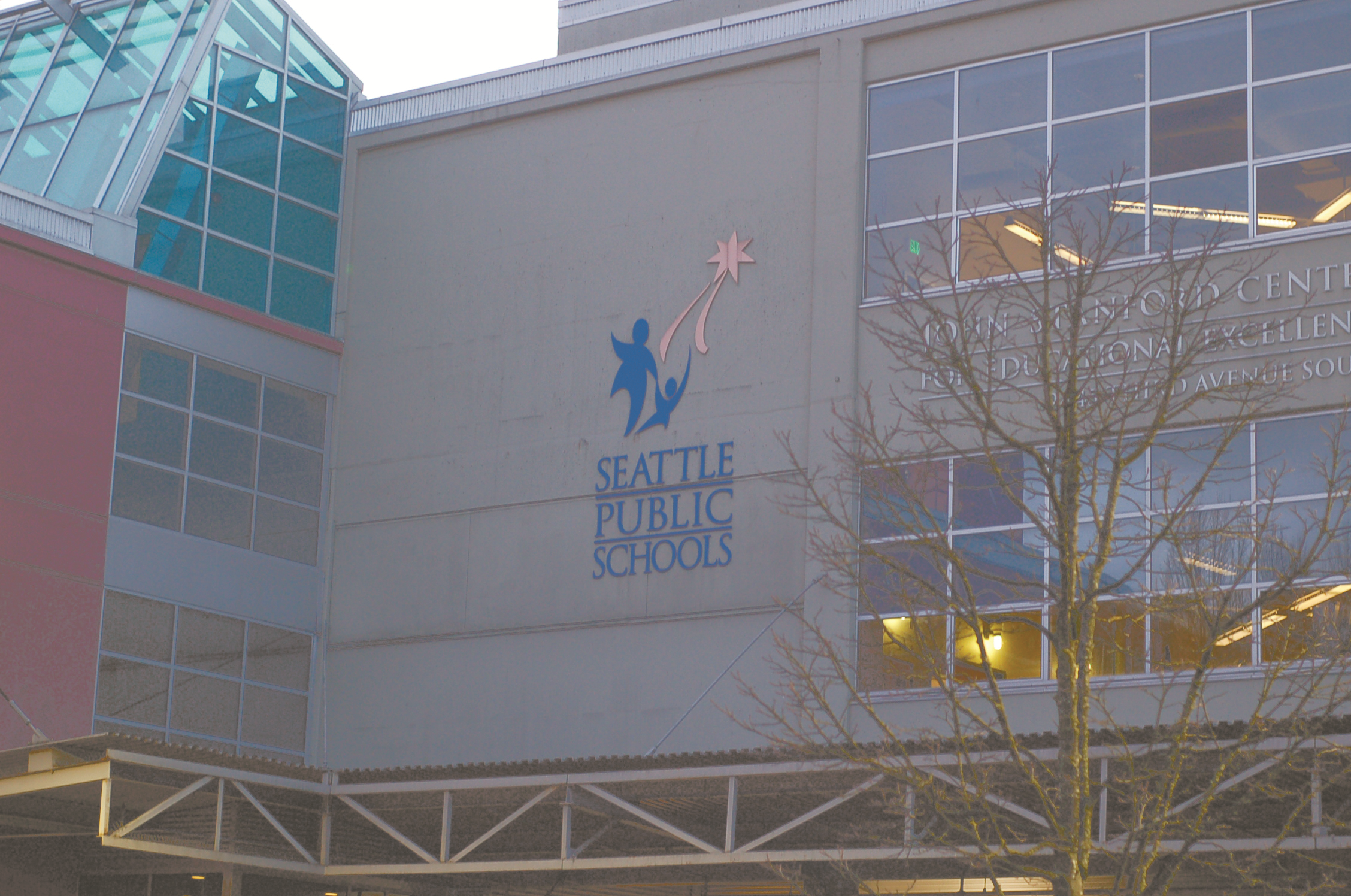
Seattle Public Schools John Stanford Center for Educational Excellence, located in Seattle’s SoDo neighborhood
Seattle Public Schools (SPS) has a lengthy history of disability discrimination. Recently, the United States Department of Education Office of Civil Rights (OCR) launched a civil rights investigation of SPS, stemming from “disturbing reports.” One such report claims that, “special education teachers were instructed by the district to not deliver specially designed instructions and disallowed the teachers from adapting to the child’s needs.”
While merely initiating an investigation does not conclude that the district is guilty, it does introduce concerns of how the education of disabled students is handled in SPS.
The OCR investigation looks at the education of disabled students during the COVID-19 pandemic. Specifically, OCR is concerned with whether the district is guilty of failing to provide a “free appropriate public education” to each qualified student with a disability as required by federal law, and denying students with disabilities equal access to education. If the district were to be found guilty, it would be an infringement of the 14th Amendment.
On Jan. 12, 2021, the investigation was announced in a letter sent to former SPS Superintendent Denise Juneau. In the OCR letter, Assistant Secretary for Civil Rights Kimberely M. Richey writes, “Office for Civil Rights, hereby informs you that it is initiating a directed investigation of SPS due to disturbing reports involving the District’s provision of educational services to children with disabilities during the COVID-19 pandemic.”
Special Education History
Students with disabilities make up around 15% of Seattle’s elementary to high school enrollment. According to the 2020 state school report card. On Oct. 30, 2020 in the midst of virtual learning, it was reported by The Seattle Times that only one special education student was receiving special services in person. This is compared to the hundreds of special education students who were receiving in-person special services in neighboring districts.
Before the pandemic, the number of mandatory educational hours for special education students was 1,000 hours in 180 school days. In the 2019-20 and 2020-21 school year, Washington’s Board of Education allowed greater flexibility in how instructional hours are delivered due to virtual learning.
The district’s history of disability discrimination is reflected in a 2007 high-profile report that found SPS was decades behind the rest of the country regarding educating students with disabilities. For example, in 2014, the state withheld 28% ($3 million) of the SPS special education budget due to “longstanding failures” in special education.
Recently, a national headline was made when a Black, disabled second-grader at SPS was denied an education and held in a cage. He was one of the few Black students to attend the mostly white, affluent school. As reported by The Washington Post, the student was locked in a cage in full view of his classmates, he would be locked in multiple times a day, multiple days a week.
KUOW found that a district official introduced the idea due to the absence of isolation rooms, and special education officials approved of this idea. The mother of the child is suing the district. The lawsuit alleges the school discriminated against the child based on “his disability and race.” A case that follows the long pattern of racial and disability discrimination in SPS.
The quality of special education seems to be a statewide issue: Washington historically ranks among the lowest states in terms of quality of special education. According to the 2017 U.S Department of Education (DOE) report to Congress, 34% of Washington special education students are dropping out, the third highest rate in the country.
DOE also concluded in 2016 that only 58% of special education students in Washington had received a diploma.
The genesis of poor results
Poor statistics and results could be the outcome of disciplinary measures used across the state. A KING 5 analysis of data from Washington’s Office of Superintendent of Public Instruction (OSPI) found that schools in Washington “suspended or expelled students with disabilities nearly two-and-a-half times the rate of students without disabilities.”
According to the U.S Department of Education’s Individuals With Disabilities Act report, there were nine states that suspended or expelled more students with disabilities (per student) than Washington State in 2017.
Wrongful discipline of special education students is a violation of federal IDEA and the anti-discrimnation law. The OSPI has an obligation to hold school districts accountable when discrimination occurs.
The state education agency has the authority to penalize school districts through actions other than withholding funds. A public records request to OSPI by KING 5 concluded that the agency has never executed that power.
Meanwhile, the outdated method of isolation and physical restraint is still being used. While there is no federal law banning the practice, it is highly recommended that it is used as a last resort.
When asked about the methods, Jackie Nowiki from the Government Accountability Office says, “When seclusion and restraint is inappropriately used, it can create some really dangerous situations, especially for some of our nation’s most vulnerable children.”
In 2015, a state law was passed with the objective to limit the amounts of isolations and physical restraints used. Nevertheless, in the 2016-17 school year, Washington school districts reported 33,368 instances of restraint and isolation.
According to an Education Week data analysis, nearly 80% of school districts reported never using physical restraints or isolation methods in the 2013-14 school year.
There is no clear answer as to why Washington state is low on various statistics. Perhaps inappropriate spending is to blame for inadequate special education resources. According to The Seattle Times, a 2012 state audit found that Ballard High officials paid several general-education teachers to teach both special education and general education with funds specifically allocated for the funding of special education.
Another claim can be made that the quality of special education in Washington state is a result of underfunding. According to the OSPI, special education in Washington was given a budget of $1.01 billion in 2014-15. The actual expenditure of that year was $1.17 billion. The difference only grows, for the 2017-18 school year, special education was given a budget of $1.37 billion while the expenditure was $1.63 billion.
The shortage of funding has led to limited resources and a lack of special education teachers, a theme that could explain Washington’s poor quality of education for disabled students.
At the time of writing, the OCR investigation is ongoing. In response to the investigation, Tim Robinson, spokesperson for SPS, said the district will “prioritize appropriate responsiveness to OSPI requirements and any and all mandated corrective actions.” According to The Seattle Times, he did not directly respond to questions about the state’s findings.
There is no clear answer to why SPS’s special education quality is below subpar. Whether it is lack of funding, outdated methods, or poor management, the investigation is another affirmation of SPS’s reputation.
The investigation also brings the spotlight and pressure on SPS. With SPS’s record and current rankings regarding special education, it raises the question if the investigation is just another stain on its harsh legacy, or is it a wakeup call for change.

